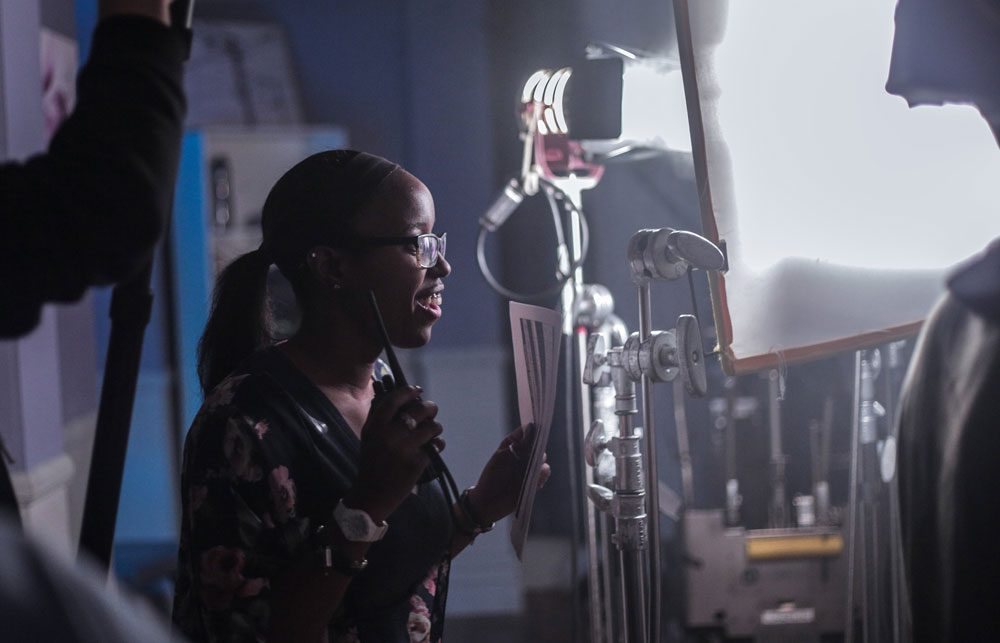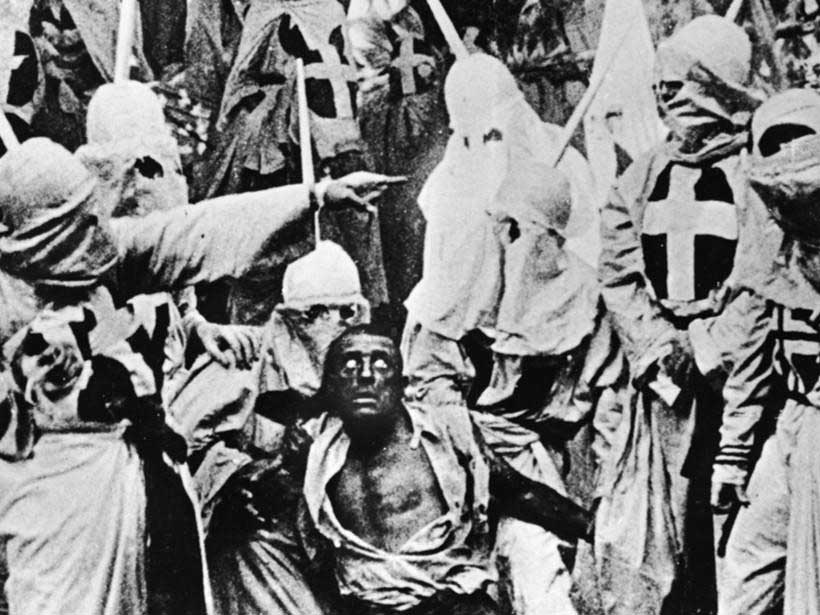Becoming a More Inclusive Filmmaker

How Hollywood Contributed to Systemic Racism
Inclusion has long been an issue in the entertainment industry—from a lack of representation to stereotyping, to blatant racism—and Hollywood is reckoning with itself once again. Inclusivity has become a buzzword that often lacks much impact on change. However, it’s important we take an unfiltered look at our history and recognize the voices left out of storytelling in the entertainment industry. Understanding where we’ve been helps us acknowledge where we are now and what we can do as an industry to be more inclusive. It’s imperative that we allow storytellers to share stories from the perspective of a lived experience rather than a Hollywood fabrication.
Jay Zabriskie is a film instructor at LAFS and says there is no magic formula to become a more inclusive filmmaker. “What I do tell many students is how much their personal experiences would make interesting films. I emphasize that they must not create clones of what is already in the theaters and streaming. They must write unique stories stemming from their imaginations and lives lived not from the last movie they saw from the Marvel Cinematic Universe.”
As a filmmaker, ask yourself if your creative contributions expand the larger narrative? What expectations will you have for yourself in making films and art that represent inclusivity?

The Beginnings of Racist Filmmaking
You’ve heard the mantra, “Those who do not learn from history are doomed to repeat it.” Well, let’s take that a step further: “Those who do not view history are doomed to repeat it.” The history of filmmaking is full of fallacies when it comes to authentic representation.
Let’s take a look back more than 100 years ago at a film that was “important, innovative, and despicable.” You’re probably heard of it: The Birth of a Nation. The story of the Ku Klux Klan (KKK) was released in 1915 in Los Angeles, with a full symphony orchestra accompanying the screening. It quickly flew across the nation on a “roadshow basis,” with “all the ballyhoo of a circus” entering the town. People were so excited to see this landmark film and, indeed, as a film it was remarkable. But its impact was catastrophic.
There are only two portrayals of Blacks in the film: “docile, dumb, and domesticated” or “sinister, rapacious, and dangerous.” For thousands of viewers, those portrayals became reality. Filmmaker D. W. Griffith set out to glorify racism, promote the idea that “equality between the races” was “against the laws of God and Nature,” and that the KKK was simply a way to enforce God’s plan. Following the film’s screenings, the KKK rose again. Scenes were recreated in real life: lynching, blood-soaked flags, and an increase in violence. Less than a decade after the release of The Birth of a Nation, there were nearly 5 million members of the KKK.
Thus, we see the power of film to persuade.
Hollywood Hasn’t Changed Much Over the Years
Hollywood has had to work hard to overcome the initial biases that were a huge part of film in the early 20th century.
A hundred years later, we’re still combating the effects of films like The Birth of a Nation. Representation is still at a crisis. Classics like Breakfast at Tiffany’s, where minorities were portrayed by white actors are still problematic, and the representation of minority groups in films is ongoing. In Breakfast at Tiffany’s, Mr. Yunioshi is played by American actor Mickey Rooney, an example of Yellowface.
Modern filmmaking isn’t immune, either. For example, Tilda Swinton’s character in Doctor Strange was originally Asian. And Scarlett Johansson starred in a Japanese classic manga series Ghost in the Shell. This type of racism has not disappeared.
The Hollywood Diversity Report for 2020 found that only 26.6% of lead roles were given to minorities. Beyond that, for any given role in a movie, just 30.9% were given to a person of color. While Hollywood still has a long way to go to be truly inclusive, these numbers are a big step forward from years past. More films are choosing diverse casts and minority actors.
What about writing and directing? Minorities directed 14.4% of top box office movies and only 10.4% of writing credits. That’s a huge deficit, one that Hollywood is trying to address. And it’s not just representation. Research shows that minority writers find themselves “isolated, relegated to lower levels” where they have little to no power.
Stereotypes in Film
For decades, minority groups faced portraying themselves as a caricature and stereotype. Leftovers from The Birth of a Nation were still handed to actors who were people of color: lazy good-for-nothings or violent and scary. Very rarely was there anything in between or “normal” in their portrayals.
And forget about heroism. It’s difficult to find a minority as the true hero in film until the late 20th early 21st century.
In 2018, Black Panther broke box office records, and several films with minority leads won Oscars, which was a huge step forward. But still, 53% of Black Americans felt that Black characters were stereotyped. Similar numbers were reported for Asian Americans.
If you think about your favorite characters in any given film, who do they represent? What type of character are they playing? While you might not think about it, many of those characteristics are stereotypes and caricatures we think don’t exist in modern society, but they do. For example, Asians are nerdy, Black men are violent, and Latinas are feisty and fiery.
Let’s go back to Mr. Yunioshi in Breakfast at Tiffany’s. Not only is he played by a white man, but this character is a bucktoothed, awkward, man with an “Engrish” accent intended to mock Japanese people learning to speak English.
While blackface has decreased dramatically in Hollywood, Black characters are still facing racism in the writing and directing of the story. Black characters die first. Black men are violent or Black women are sassy. They’re the best friend or sidekick but not the hero.
Latinos, who are the largest ethnic minority in America, struggle with their own type of stereotype. Latinas are often cast for their sex appeal, while men are pigeonholed as the “Latin Lover” or a violent drug dealer. And greater still, many films ignore the incredible diversity in the Latin community altogether.
While it’s discouraging to discover our filmmaking heroes have been perpetuating racism, knowingly or unknowingly, for decades, it’s time for Hollywood to commit to change and make it happen.
New Standards for the Oscars—A Big Step for Step Toward Inclusion
When it comes to moving forward, the Academy of Motion Picture Arts and Sciences is doing its best to lead the way. This year, 2020, the Academy has decided to “implement new representation and inclusion standards for Oscars.”
One of the first steps is that the best picture category will be set at 10 nominees, period. The number will not change.
Additionally, the Board of Governors will have stricter term limits. The screenings of eligible films will be spread out, broadening exposure. A new series of panel discussions for members and the public about race issues will be hosted by Whoopi Goldberg, called “Academy Dialogue: It Starts With Us.”
These steps, and more, represent progress for Hollywood and filmmaking awards. With the Academy leading the way, we hope that studios and individual filmmakers will follow suit taking a few significant steps at a time toward more inclusion.
4 Ways You Can Eliminate Bias & Stereotypes as a Filmmaker

Whether you’re the director, writer, cinematographer, or simply a runner on set, you can make a difference in how inclusive your film is. Racism has permeated our industry, but as a filmmaker here are some ways to stop it. While not all of these will apply to your specific job on or off the set, take what you can, and make it a part of your life as a filmmaker.
Hire minorities.
We’re not only talking about actors and directors but also the people on your crew. Take a look at who you’ve hired and who you’ve given that “big break” to fetch crafty. If you look around and you see a sea of similar people in higher ranking positions, it’s time to make a change.
Watch for stereotypes in your film, and call them out.
If you notice a stereotype in your film, start asking questions. Why is this here? Is it really needed? Especially if you are a screenwriter, ask for help. Let persons of color take a look at your script before you finalize it. Ask them to be honest. They’re more likely to find a stereotype than you are. And most importantly…
Listen.
Especially if you are in a position of power in a film (the writer, director, or anyone with a team) listen to your minority colleagues or employees. Believe them when they say something inappropriate happened. Stand up for them. By creating a culture on set where bias, stereotypes, and racism are unacceptable, everyone will feel safe working for you.
Broaden your horizons.
Try to feature minority groups in your writing and filmmaking. Tell their stories. Ask them to help you tell their story. Learn about them and their history and make them a part of your filmmaking family. Watch diverse films. Support films and television that support minority groups.
If you want to learn more and find other ways to be more inclusive, there are many resources available to you. Here are a few we have found helpful:
Sundance Inclusion Resource. This is a “searchable storehouse of opportunities” for filmmakers from underrepresented communities.
Inclusion Films. Started in 2007, this group “aims to teach the art of filmmaking to people with disabilities.”
Film Independent. This group hopes to “support a community of artists who embody diversity.” They’re all about networking and helping you get your foot in the door to create and support diverse films.
Cast and Crew of Color. An online professional network designed specifically for people of color who work in film, TV and digital media. A good place to network and find people to hire.
Black Hollywood Education and Resource Center. A nonprofit that advocates, educates, researches, develops, and preserves the history of Blacks in film and television.
We heartily applaud you in your journey as a filmmaker. Just reading this article is a good step.
You will probably have to go out of your comfort zone to be more inclusive—there is nothing wrong with that. Push forward, ask for help, and, above all, listen. You’ll learn so much and make a big difference in your filmmaking community.
